Threadfin rainbowfish - Iriatherina werneri
Scientific name: Iriatherina werneri
Common name: Threadfin rainbowfish
Family: Melanotaeniidae
Usual size in fish tanks: 4 - 5 cm (1.57 - 1.97 inch)
014
Recommended pH range: 6 - 7.5
Recommended water hardness: 2 - 12°N (35.71 - 214.29ppm)
0°C 32°F30°C 86°F
Recommended temperature range: 24 - 29 °C (75.2 - 84.2°F)
The way how these fish reproduce: Spawning
Where the species comes from: Oceania
Temperament to its own species: peaceful
Temperament toward other fish species: peaceful
Usual place in the tank: Top levels
General Information
Threadfin Rainbowfish (Iriatherina werneri) is a delicate, peaceful nano rainbowfish from slow, plant-choked creeks and swamps of southern New Guinea and northern Australia. Males display spectacular, filamented fins and courtship dances; a proper group (8–10 ) encourages natural behaviour and reduces shyness. Adults reach about 4–5 cm.
Food & Feeding
Despite a willing appetite, the species has a tiny mouth and narrow throat. Offer ultra-fine foods: powdered quality flakes/micro-granules, freshly hatched brine shrimp nauplii, daphnia (sieved to small size), cyclops, microworms, vinegar eels, and fine frozen fare (rotifers, cyclops). Feed small portions 2–3× daily; avoid coarse pellets.
Sexing
Males are more colourful with markedly elongated, sail-like dorsal/anal fins and filamented rays; females are smaller, plainer, and rounder-bodied.
Breeding
A continuous/spawning-mop breeder. Use a separate, gently filtered tank with fine-leaved plants or mops. Slightly cooler, fresh water changes often trigger courtship. Adults scatter adhesive eggs over days; either remove mops to a hatching box or keep adults light on density/feeding. Eggs typically hatch in ~7–10 days (temperature-dependent). Start fry on infusoria/rotifers, then baby brine shrimp once large enough.
Lifespan
Typically 3–5 years with stable, clean water and an appropriately fine diet.
Tank Requirements & Water Parameters
- Tank size: from 60 cm (24″) length for a group; open swimming lane plus dense planting and floating cover.
- Temperature: 24–29 °C (75–84 °F) for long-term care; brief higher peaks are tolerable but avoid sustained >30 °C.
- pH: 6.0–7.5 (soft to mildly hard). Stability matters more than the exact number.
- Hardness: soft to moderate (≈ 2–12 °dH).
- Filtration/flow: gentle sponge or diffused outflow; they dislike strong current. High oxygenation without blasting flow.
- Aquascape & light: dark substrate, dense plants, floating cover for diffused light; calm surface preferred.
- Maintenance: weekly water changes; avoid abrupt parameter swings.
Compatibility & Tank Mates
Peaceful and timid. Ideal companions are small, calm species that won’t outcompete them for micro-foods: small rasboras, tiny tetras, peaceful shrimp/snails, and gentle pygmy Corydoras. Avoid fin-nippers, boisterous fish, and large fast feeders.
Behaviour & Usual Place in the Tank
Active in the upper/top levels, especially under floating plants. Males display to one another; keep a ratio of 1 male to 2–3 females or multiple males with ample line-of-sight breaks.
Short Description
Threadfin Rainbowfish (I. werneri) is a graceful nano rainbow for quiet, planted aquaria: ultra-fine diet, gentle filtration, soft to moderately hard water, and stable warmth yield the best colours and flowing fins.
Pictures
Bought by aqua-fish.net from jjphoto.dk.
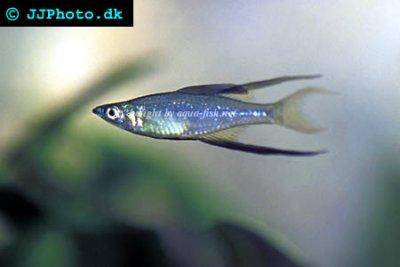


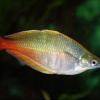 Bleher’s
Bleher’s 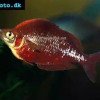 Red
Red 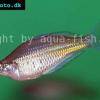 Ramu
Ramu 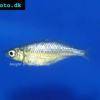 Wanam
Wanam 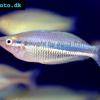 New
New 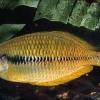 Yakati
Yakati 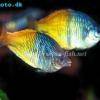 Boesemani
Boesemani 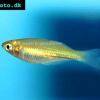 Crimson
Crimson 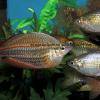 Australian
Australian 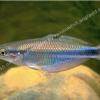 Goldie
Goldie 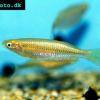 Slender
Slender 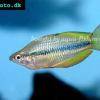 Lake
Lake 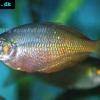 Irian
Irian 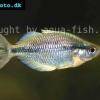 Kamaka
Kamaka 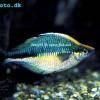 Lake
Lake 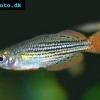 Dwarf
Dwarf 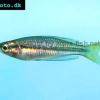 Black
Black 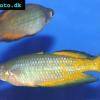 Parkinsoni
Parkinsoni 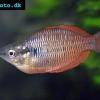 Sunset
Sunset 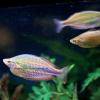 Neon
Neon 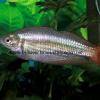 Western
Western 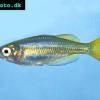 Inornate
Inornate 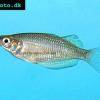 Ruby
Ruby 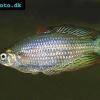 Eastern
Eastern 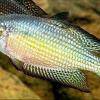 Desert
Desert 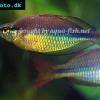 Regal
Regal